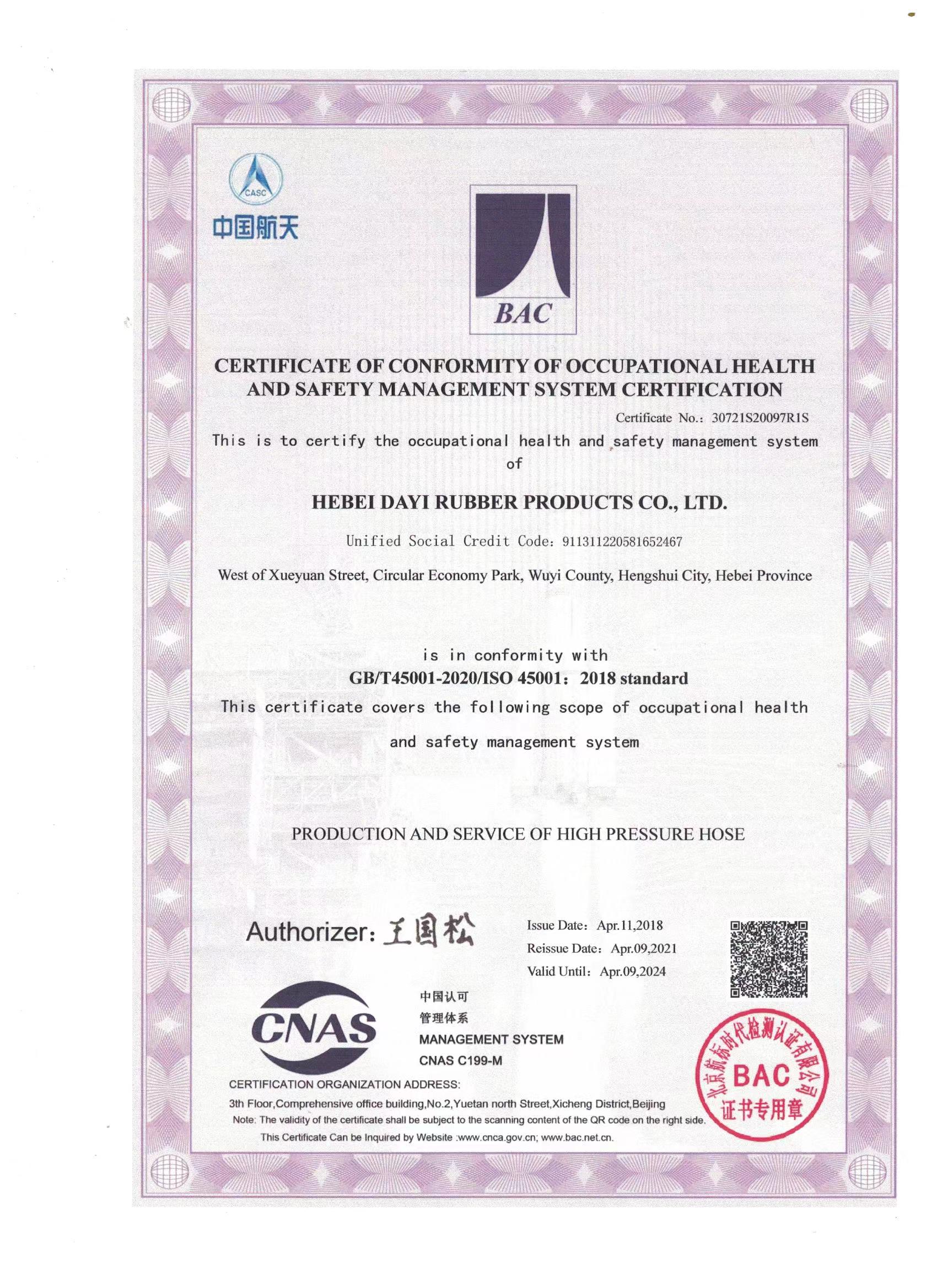335345435
Aug . 12, 2024 08:50 Back to list
A Comprehensive Guide to Understanding China EN854 2TE Standards and Applications in Industry
Understanding the Chinese Standard EN854 2TE
The world of industrial materials is vast and complex, with various standards ensuring safety, efficiency, and compatibility. One such standard that has gained attention, particularly in China, is EN854 2TE. This standard pertains to a specific type of hose used in hydraulic systems, and its significance cannot be overstated.
EN854 2TE is primarily designed for low-pressure hydraulic applications. The identification of this standard can be broken down as follows EN stands for European Norm, indicating that it meets certain European standards for quality and safety. The 854 refers to the particular category of the hose, and 2TE signifies its construction type, which typically involves a textile reinforcement. This standard is particularly relevant for industries where hydraulic fluid transfer is crucial, such as construction, agriculture, and manufacturing.
Importance of EN854 2TE
The relevance of EN854 2TE is underscored by its safety features and performance capabilities. Hydraulic hoses are subject to high pressures and varying environmental conditions. Thus, the EN854 2TE standard includes specific requirements for material composition, pressure ratings, and flexibility. This ensures that the hoses can withstand the rigors of operation without rupturing, leaking, or degrading over time.
One of the key characteristics of hoses meeting this standard is their ability to handle oil, water-based fluids, and other hydraulic media. The hoses are typically constructed with a synthetic rubber inner lining, reinforced with textile or steel cords. This combination allows for high tensile strength while maintaining flexibility – an essential factor for applications requiring movement or bending.
Moreover, the EN854 2TE hoses boast a temperature range that allows them to function effectively in extreme conditions, making them highly versatile. The standard also provides guidelines on abrasion resistance, ensuring longevity even in rugged environments.
Applications and Industries
china en854 2te

Hoses compliant with EN854 2TE are utilized across various sectors. In agriculture, they are employed to power tractors and other machinery, facilitating tasks like irrigation and harvesting. The construction industry relies on these hoses for powering equipment, such as excavators and bulldozers, where reliable hydraulic pressure is essential for efficient operations.
In manufacturing, EN854 2TE hoses are often integral to assembly lines and automated machinery, contributing to seamless production processes. Their application is not limited to heavy industries; they also find use in light machinery and equipment, emphasizing their wide-ranging utility.
Choosing the Right Hose
Selecting the appropriate hydraulic hose is critical for operational safety and efficiency. Factors such as compatibility with the hydraulic fluid, working pressure, and environmental conditions must be considered. It's essential to review the manufacturer's guidelines and ensure that the hose meets the EN854 2TE specifications.
Moreover, regular inspection and maintenance of hydraulic systems are paramount. Hoses should be checked for signs of wear, leaks, and other potential issues to prevent failure during operation. Adhering to the EN854 2TE standard simplifies this process, as users can trust that they are working with products designed to meet rigorous safety and performance parameters.
Conclusion
In conclusion, EN854 2TE is a vital standard in the realm of hydraulic hoses, offering a benchmark for quality and safety across various industries. Its influence spans from agricultural machinery to heavy construction equipment, making it a cornerstone in hydraulic applications. As industries evolve and demand more from their equipment, adhering to such standards will remain essential for ensuring operational safety and efficiency. By understanding and implementing the best practices associated with EN854 2TE, businesses can enhance their productivity while safeguarding their workforce and equipment.
-
SAE 100 R17 Black Smooth Cover Hydraulic Hose
NewsMar.07,2025
-
SAE 100 R17 Black Smooth Cover Hydraulic Hose
NewsMar.07,2025
-
SAE 100 R17 Black Smooth Cover Hydraulic Hose
NewsMar.07,2025
-
SAE 100 R17 Black Smooth Cover Hydraulic Hose
NewsMar.07,2025
-
SAE 100 R17 Black Smooth Cover Hydraulic Hose
NewsMar.07,2025
-
steel wire braided hydraulic hose
NewsMar.07,2025



